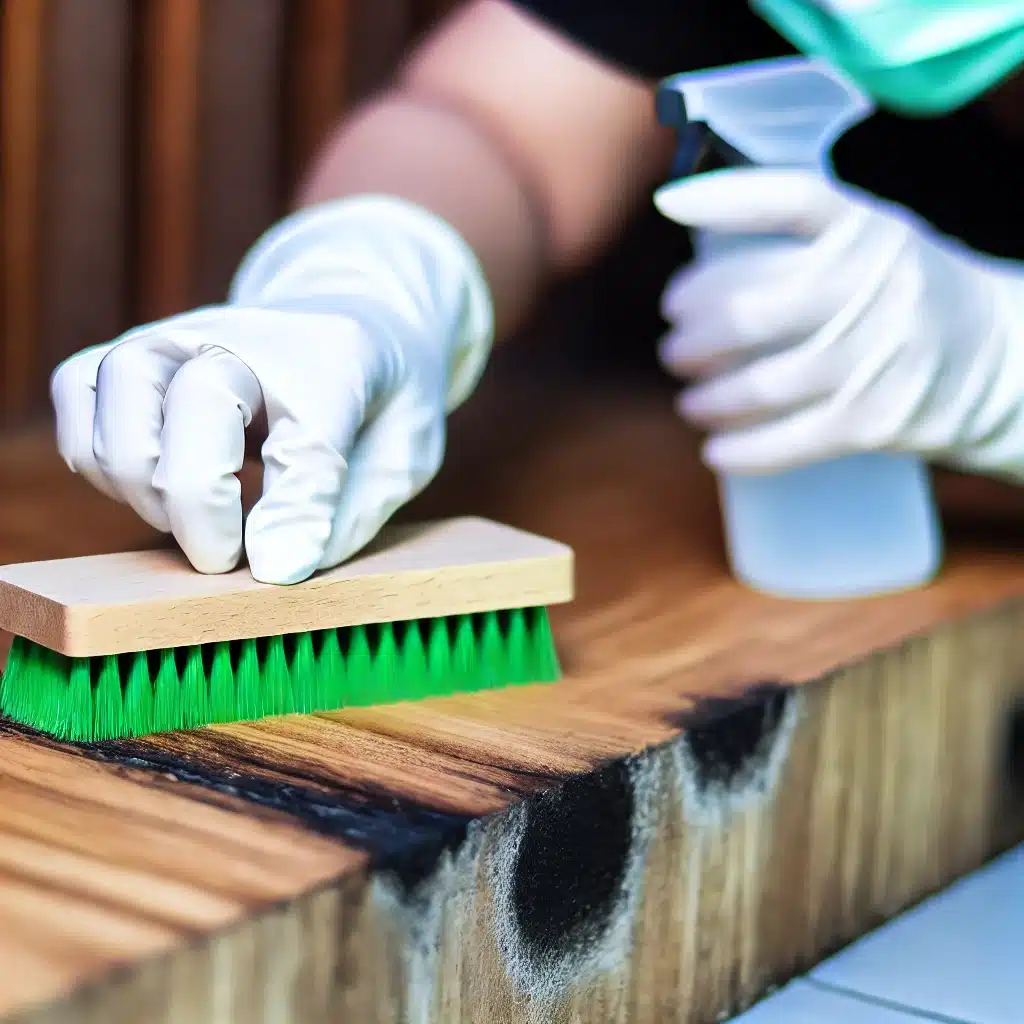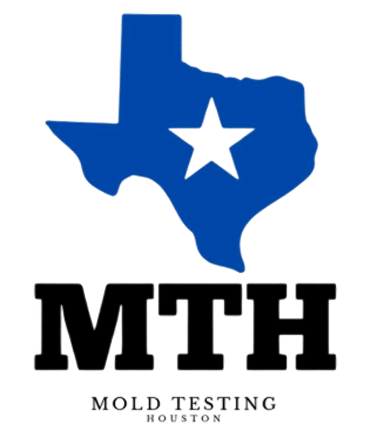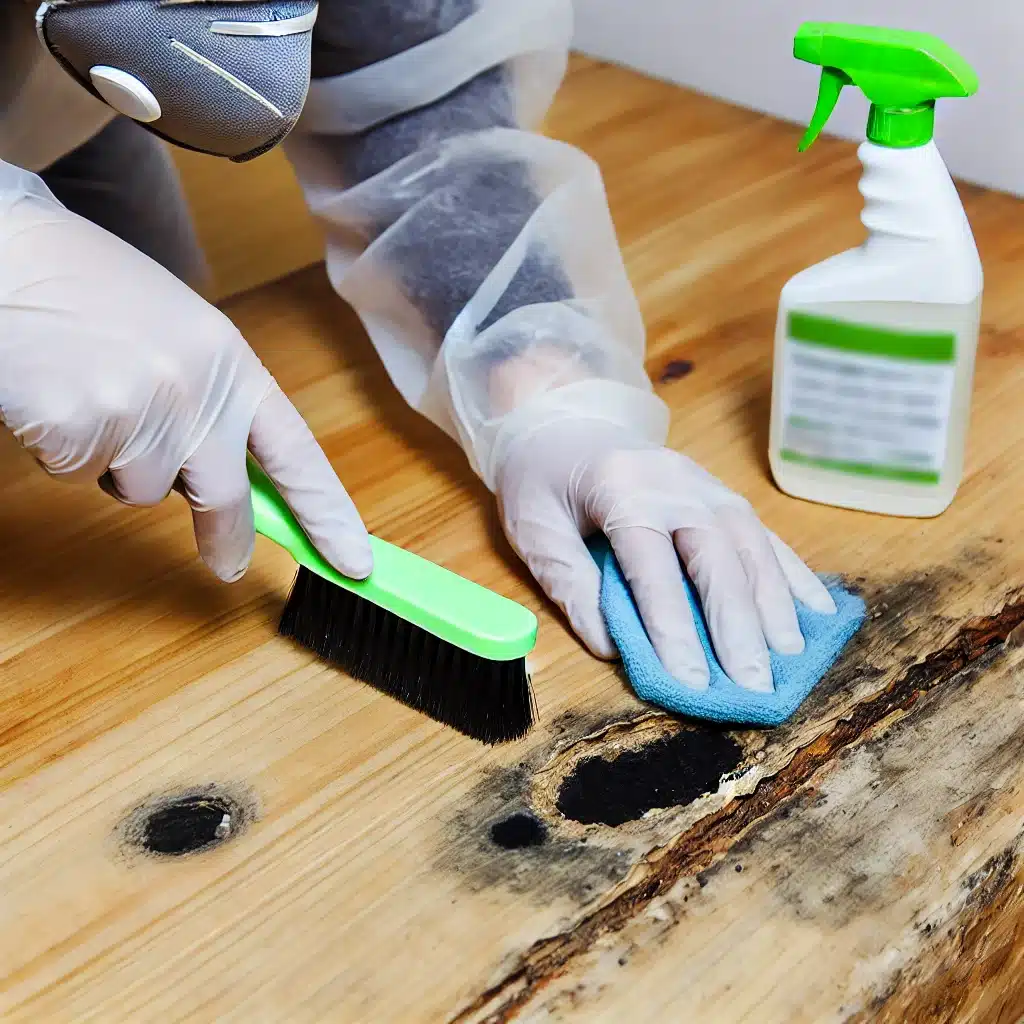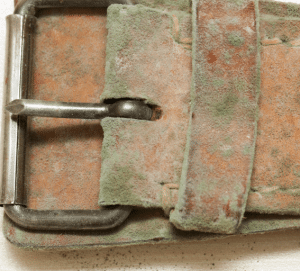Are you struggling with how to remove toxic black mold on your wood? It’s more than just a nuisance, it’s a real danger! Toxic black mold, called Stachybotrys chartarum, can grow on wood surfaces like floors, furniture, or walls, releasing harmful spores into the air.

Exposure to this type of mold can cause serious health problems, especially for children, the elderly, and those with breathing issues. Knowing how to remove toxic black mold from wood is vital to keep your home safe and healthy.
Imagine a home free of this harmful mold, where your wood looks clean, and your air is safe to breathe again. This comprehensive guide will teach you step-by-step how to remove toxic black mold from wood and what to do to keep it away for good.
Health Risks Associated with Toxic Black Mold
Exposure to toxic black mold can have severe consequences for your health. The spores released by this fungus can cause a range of respiratory problems, including:
- Coughing and wheezing
- Difficulty breathing
- Asthma attacks
- Chronic lung infections
- Neurological symptoms, such as memory loss and confusion
In some cases, exposure to toxic black mold has been linked to more severe health conditions, such as bleeding in the lungs and even death. It’s essential to take immediate action to remove toxic black mold from your home or workspace to protect yourself and your loved ones.
Identifying Toxic Black Mold on Wood
Recognizing the presence of toxic black mold on wood can be challenging, as it can often be mistaken for other types of mold. However, there are a few key characteristics that can help you identify toxic black mold:
Color
Toxic black mold usually appears as a dark greenish-black substance. It tends to grow in clusters or spread out across the wood, which can make it look like it’s staining the surface.
Texture
Unlike regular mold, toxic black mold has a fuzzy or velvety texture. It also feels damp or slightly slimy to the touch, which is a key indicator that you’re dealing with something more serious.
Location
This mold thrives in damp environments, so you will often find it in places with water damage, leaks, or poor ventilation. Think about areas like basements, attics, or near windows where moisture builds up.
If you suspect the presence of toxic black mold on your wood surfaces, it’s essential to have it professionally tested to confirm the type of mold and the extent of the infestation.
Precautions Before Removing Toxic Black Mold
Before attempting to remove toxic black mold from wood, it’s crucial to take the necessary precautions to protect yourself and your family. Here are some important steps to follow before removing toxic black mold:
Wear Protective Gear
Make sure to wear an N-95 or P-100 respirator mask, along with safety goggles and gloves. This gear is essential to keep mold spores from getting into your lungs or making contact with your skin.
Isolate the Area
Use plastic sheets or tarps to seal off the area where the mold is growing. This prevents the mold spores from spreading to other rooms or areas while you work on removing it.
Shut Down HVAC Systems
Shut down any air systems like heaters or air conditioners to keep mold spores from blowing around. Doing this will stop mold spores from circulating through the air ducts and spreading throughout your entire home or office.
Minimize Dust and Debris
Avoid using brooms or regular vacuums in the moldy area because they can stir up mold spores and make them airborne. Instead, use a vacuum with a HEPA filter specifically designed for mold.
By following these precautions, you lower the risk of exposing yourself and others to toxic mold and make the removal process safer and more effective.
Steps to Remove Toxic Black Mold from Wood
Once you’ve taken the necessary safety measures, you can begin the process of removing toxic black mold from your wood surfaces. Here are the steps to follow:
- Identify and Repair the Source of Moisture: Locate and address the root cause of mold growth, such as leaks, water damage, or poor ventilation. Fixing the underlying moisture problem is crucial to prevent the mold from returning.
- Prepare the Work Area: Cover the floor and any nearby surfaces with plastic sheeting to contain the mold and prevent its spread.
- Apply a Mold-Killing Solution: Use a commercial mold-killing solution or a mixture of water and bleach (1 cup of bleach per 1 gallon of water) to thoroughly saturate the affected wood surfaces.
- Scrub the Mold: Use a stiff-bristle brush to scrub the wood and remove the mold. Be sure to work in sections and rinse the brush frequently to avoid spreading the mold.
- Dry the Area: Once the mold has been removed, thoroughly dry the wood surface using fans, dehumidifiers, or by opening windows (weather permitting).
- Dispose of Contaminated Materials: Carefully remove and dispose of any contaminated materials, such as rags, brushes, and plastic sheeting, in sealed bags.
It’s important to note that if the mold infestation is extensive or you are unsure of your ability to safely remove it, it’s best to consult a professional mold remediation service.
Cleaning Tools and Products for Mold Removal
Proper cleaning tools and products are essential for effective and safe mold removal. Here are some recommended items:
- N-95 or P-100 respirator mask
- Goggles
- Rubber gloves
- Stiff-bristle scrub brush
- Mold-killing solution (commercial or homemade bleach-based solution)
- Dehumidifier or fans
- Plastic sheeting and duct tape
Check the label and follow the rules when using cleaning products or tools to stay safe.
Preventing Future Mold Growth on Wood Surfaces
To prevent the recurrence of toxic black mold on your wood surfaces, it’s crucial to address the underlying moisture issues and maintain a dry, well-ventilated environment. Here are some simple ways to stop mold from coming back in the future:
Improve Ventilation
Ensure your home or workspace gets good airflow by using exhaust fans in bathrooms and kitchens, cracking open windows when possible, or setting up a dehumidifier to keep the air dry and fresh.
Address Leaks and Water Damage
Fix any leaks in roofs, walls, or plumbing right away, and clean up water damage promptly. Mold thrives in damp spots, so removing these sources of moisture is key to preventing its growth.
Use Mold-Resistant Paints or Sealants
Applying mold-resistant paints or sealants to your wood surfaces adds an extra layer of protection. These products are designed to stop mold from growing, making them a smart investment for long-term prevention.
Monitor Humidity Levels
Keep an eye on indoor humidity levels with a simple hygrometer. Aim to keep humidity below 50%, as mold tends to grow in higher humidity. Adjust with a dehumidifier if needed.
Regularly Inspect for Mold
Check your wood surfaces regularly, especially in places prone to dampness, for any signs of mold. Catching mold early means you can deal with it before it becomes a bigger problem.
By taking these proactive measures, you can significantly reduce the risk of toxic black mold returning to your wood surfaces.
Professional Mold Removal Services
If the mold infestation on your wood surfaces is extensive or you feel uncomfortable with the removal process, it’s best to hire a professional mold remediation service. These experts have the necessary training, equipment, and experience to safely and effectively remove toxic black mold from your home or workspace.
When selecting a mold removal service, be sure to:
- Verify their credentials: Ensure the company is licensed, insured, and follows industry best practices.
- Ask for references: Request references from past clients to gauge their level of expertise and customer satisfaction.
- Get a detailed estimate: Obtain a comprehensive written estimate that outlines the scope of work, timeline, and cost.
Hiring a professional mold removal service can provide you with peace of mind and ensure the safe and complete elimination of toxic black mold from your wood surfaces.
DIY Alternatives for Mold Removal
If the mold infestation is relatively small and confined to a specific area, you may be able to remove it yourself using DIY methods. However, it’s important to carefully weigh the risks and take all necessary precautions to protect your health and safety.
One DIY option is to use a vinegar-based solution to kill the mold. Mix equal parts white vinegar and water in a spray bottle and thoroughly saturate the affected wood surfaces. Allow the solution to sit for at least an hour before scrubbing the mold away with a stiff-bristle brush.
Another DIY approach is to use a baking soda-based solution. Mix 1 cup of baking soda with 1 gallon of water and apply the solution to the mold-affected areas. Let the mixture sit for several hours before scrubbing and rinsing the wood.
Remember, even with DIY methods, it’s crucial to wear appropriate protective gear, isolate the work area, and properly dispose of any contaminated materials. If the mold infestation is extensive or you have concerns about your ability to remove it safely, it’s best to consult a professional mold remediation service.
Frequently Asked Questions
How can I tell if the mold on my wood is toxic black mold?
Toxic black mold is usually dark greenish-black and can look slimy or velvety. It often grows in areas with high moisture, like leaks or water-damaged spots. If you’re unsure, it’s best to get a professional mold test to confirm what type you’re dealing with.
What kills black mold instantly on wood?
There isn’t a magic solution that kills mold instantly, but a mixture of vinegar and baking soda can be quite effective. Apply it directly to the mold, scrub with a brush, and rinse. For heavy infestations, a stronger solution or professional treatment might be needed.
How do you stop mold from growing on wood?
The key to stopping mold is controlling moisture. Fix any leaks, use dehumidifiers, and ensure proper ventilation. Applying a mold-resistant sealant to wood can also help prevent mold from coming back.
What is the best way to kill mold on wood—using bleach or vinegar?
Vinegar is often better for killing mold on wood. It penetrates the wood better, killing the mold at its roots. Bleach, on the other hand, can miss the deeper layers and may not be as effective in the long run.
Is it safe to leave the vinegar on a mold for the whole night?
Yes, leaving vinegar on mold overnight is safe and can be effective. The vinegar works to kill the mold over time, and rinsing it off the next day will help remove the dead mold and spores from the surface.
Conclusion
Removing toxic black mold from wood isn’t just about cleaning, it’s about protecting your home and health. The process requires precision and care to ensure that every trace of this hazardous substance is eliminated. While the steps outlined in this guide provide a solid foundation, sometimes DIY solutions aren’t enough, especially when the safety of your loved ones is on the line.
Imagine a future where you no longer have to worry about hidden mold lurking in your home. Your wooden surfaces are pristine, the air is fresh, and your family’s well-being is assured. Achieving this peace of mind begins with expert intervention.
At Mold Testing Houston, we specialize in identifying and eradicating mold at its source, ensuring that it’s gone for good. Our team of professionals uses advanced techniques to detect even the most hidden mold, providing you with a comprehensive solution that’s tailored to your needs. We don’t just remove mold, we restore your home to a safe, healthy environment.
Why take chances with your health? Let the experts at Mold Testing Houston handle the tough jobs so you can enjoy a mold-free home without the stress. Trust us to bring safety, health, and comfort back into your life. Reach out today, and let us make your home the sanctuary it was meant to be.
End Note
At Mold Testing Houston, we’re committed to helping you create a safer and healthier home environment by providing thorough and reliable mold inspection and mold testing services. Whether you’re dealing with toxic black mold or want to ensure your space is mold-free, our expert team is here to help. Learn more about our comprehensive range of services and what we offer by visiting our Services page.
We’re proud to serve the Houston area and beyond! Find out if we are in your neighborhood by checking out our Service Areas. Discover more about who we are, our mission, and our commitment to quality service on our About Us page.
Stay informed with the latest mold prevention tips, health information, and updates by following our Blog & Article. Don’t forget to connect with us on Facebook and Instagram for engaging content, customer stories, and real-time updates.
Ready to take action against mold in your home? Reach out to us via our Contact Us page, and let’s work together to make your home mold-free. Your health and safety are our top priorities, trust Mold Testing Houston for the job!





